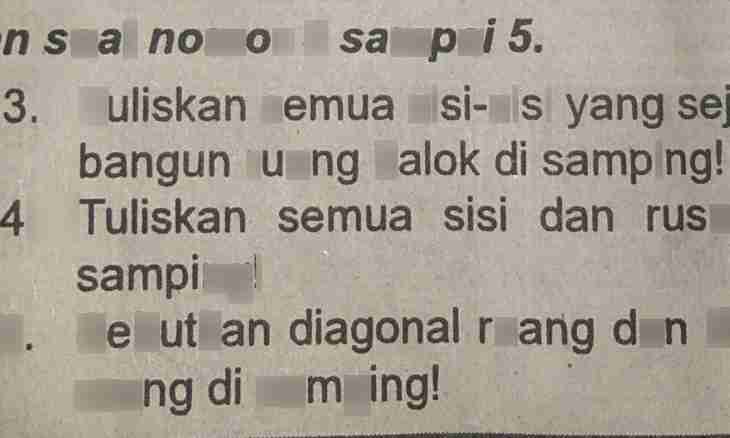If in statements of the problem the rectangle perimeter, length of its diagonal is specified, and it is required to find length of the parties of a rectangle, use the knowledge of ways of the solution of quadratic equations and properties of rectangular triangles.
Instruction
1. Designate for convenience of the party of a rectangle which need to be found in a problem, for example, of an and b. Call the diagonal of a rectangle with, and perimeter of River.
2. Work out the equation for finding of perimeter of a rectangle, it is equal to the sum of its parties. At you it will turn out: a+b+a+b= P or 2*a +2*b= River.
3. Pay attention to that fact that the diagonal of a rectangle divides it into two equal rectangular triangles. Now remember that the sum of squares of legs is equal to a hypotenuse square, that is: а^2+b^2= с^2.
4. Write out the received equations nearby, you will see that the system from two equations with two unknown and and b turned out. Substitute the values given in a task for the size of perimeter and diagonal. Let's assume that in statements of the problem the value of perimeter is 14, and a hypotenuse 5. Thus, the system of the equations looks as follows: 2*a +2*b=14а^2+b^2=5^2 or а^2+b^2=25
5. Solve the system of the equations. For this purpose in the first equation transfer b with a multiplier to the right part and divide both members of equation into a multiplier and, that is on 2. You receive: and =7-b
6. Substitute value and in the second equation. Correctly remove the brackets, you remember how to square composed in brackets. You receive: (7-b) ^2+b^2=257^2-7*2*b + b^2+b^2=2549-14*b+2*b^2=252*b^2-14*b+24=0
7. Remember the knowledge of a discriminant, it is equal in this equation 4, that is more than 0th, respectively, this equation has 2 decisions. Calculate equation roots by means of a discriminant, you receive that the party of a rectangle of b is equal either 3, or 4.
8. Substitute serially received values of the party of b in the equation for and (you watch a step 5), and =7-b. You receive that at b equal 3, and is equal to 4. To the contrary, at b equal 4, and it is equal to 3. Pay attention that decisions are symmetric therefore the answer of a task is as follows: one of the parties is equal 4, and the second 3.
